7 things to know about the Great Pyramid of Giza
7 things to know about the Great Pyramid of Giza
7 things to know about the Great Pyramid of Giza
-
Hannah
-
Hannah
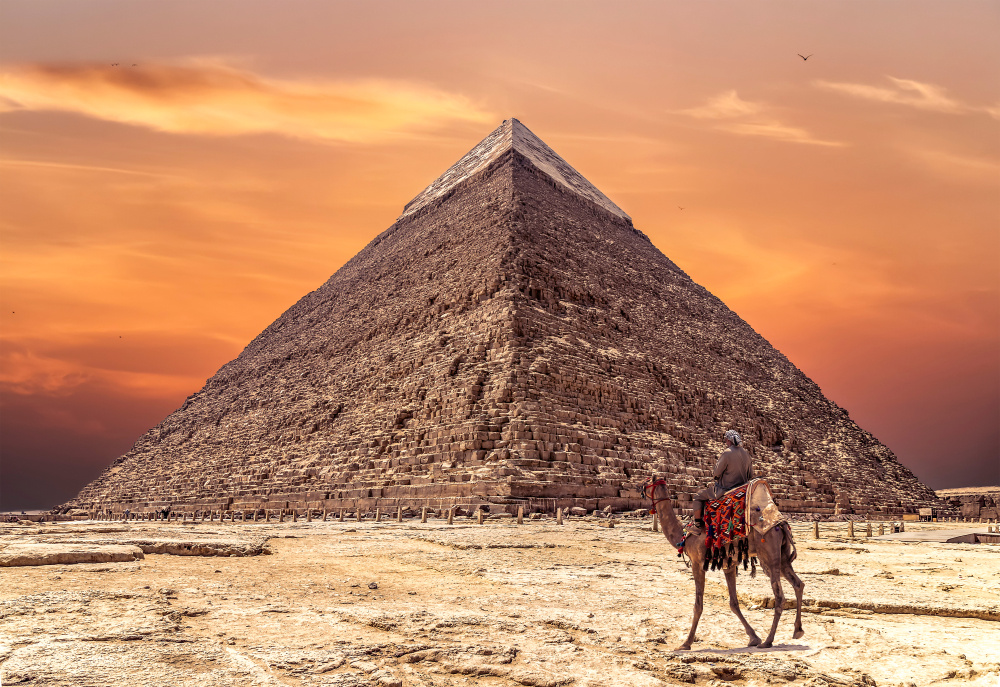
For almost 4,000 years the Great Pyramid of Giza has stood tall in the Arabian Desert, a ‘mute giant’ as I describe it in my novel Song of the Nile, silent witness to the unfolding of humanity’s challenges and triumphs.
Last week, the pyramid was headline news all over the world (more on this below), and it struck me how eager we are to learn about this ancient wonder. Here are some facts to whet your appetite, along with some questions that remain – as yet – unanswered.
1. The pyramid was built for Khufu
Khufu (or Cheops, to the Greeks) was a pharaoh of the Fourth Dynasty in the Old Kingdom. He ruled from c. 2609 to 2584 BC.

Ivory statuette of Khufu, Egyptian Museum
Like his predecessors, Khufu commissioned the building of a pyramid which would serve as a burial monument after his death. As I explain in my article ‘Why did Egyptian pharaohs build pyramids – and why did they stop?’, Egyptian kings built pyramids in accordance with their religious beliefs, to ensure eternal life. But of course such a monument was also an enduring statement of power and wealth, and clearly Khufu was determined to leave his mark and be remembered!
2. Khufu’s pyramid was the tallest for thousands of years
Upon its completion, in 2600 BC, the pyramid was the tallest of all pyramids in Egypt, standing at 146.6 metres. Beyond that, though, it was the tallest structure in the entire world – and it continued to be so until 1311 AD, when the central spire built for Lincoln Cathedral in England edged higher, at 160 metres.
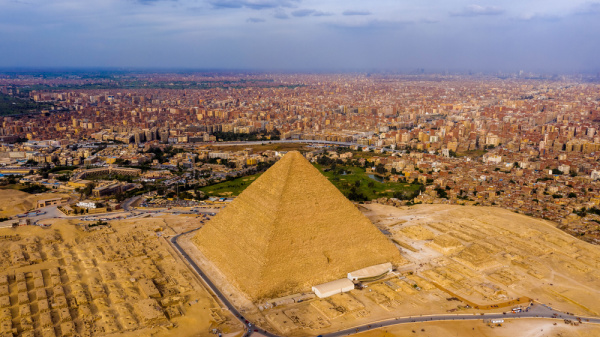
Khufu’s pyramid today, towering over the modern cityscape of Cairo
3. The pyramid was originally a stunning white
What we see of the pyramid today – the somewhat unequal-sized, rough-hewn limestone blocks piled high – is not what the completed structure looked like. This is merely the core structure, upon which was laid casing stones to give sleek, smooth lines.
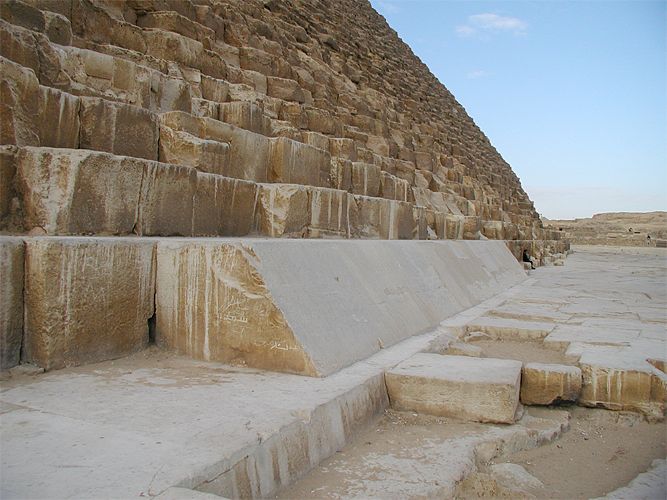
Casing stones remaining at the foot of the pyramid
While the stones used for the structure were yellow in colour, quarried locally, the casing stones were taken from the quarry at Tura, which gave beautiful white limestone, and were polished until they gleamed. Imagine how this white beacon must have stood out amid the golden sands of the desert for miles around.
4. We still don’t know how it was built
The pyramid is an architectural wonder: 2.3 million large blocks of stone weighing some 6 million tonnes so well laid that the structure has endured for thousands of years. Inside, we can imagine that spaces would have caved in under the pressure of all that weight, but no, still chambers and passageways and shafts are intact.
How exactly workers transported stone from the quarries to the site and moved it into position is still a subject of debate for scholars. Certainly, it was a feat of engineering, and of people management: it’s estimated that the workforce numbered between 30,000 and 40,000 men.
5. At the foot of the pyramid lay a buried ship
Khufu’s ship was discovered in the 1950s sealed in a pit that had been carved into the bedrock. It was a solar barque, used as part of the funeral rituals for the pharaoh (it was believed that after death the king would travel in this boat through the skies).
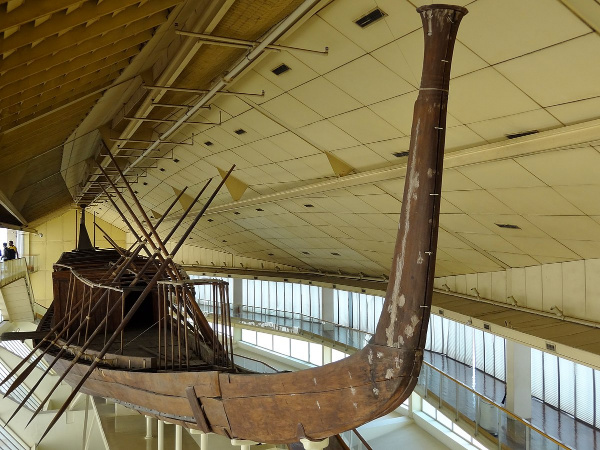
Khufu’s ship, restored
The boat was in 1,224 pieces, and a painstaking restoration project was launched by the Egyptian Department of Antiquities. The restored boat is 43.4 metres long and 5.9 metres wide and is the best-preserved vessel from antiquity; it’s the oldest intact ship in the world. In 2021 the solar barque was transported from the Pyramids of Giza to its new home at the Grand Egyptian Museum at Cairo. The journey took ten hours, so carefully was the fragile ship moved.
6. The mummy of Khufu is missing
In the King’s Chamber within the pyramid there is a sarcophagus made from a hollowed-out block of red granite. Its lid is missing, and no mummy was found within the sarcophagus.
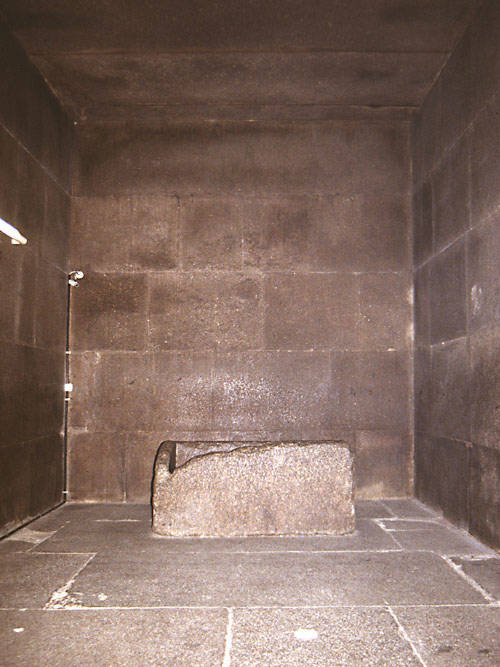
The sarcophagus in the King’s Chamber
Some historians have suggested that this is not, in fact, the burial chamber for the pharaoh. For one thing, the sarcophagus is imperfect in its finish, with some marks from the workmen’s tools – hardly fitting for the pharaoh. In addition, the so-called King’s Chamber is located above the entrance to the pyramid, where no other burial chamber for a pharaoh before or after was situated.
7. We are still finding hidden spaces inside
The pyramid was in the news last week because Egyptian antiquities officials had confirmed the discovery of a hidden corridor inside the pyramid, above the main entrance, and shared footage of this space captured via an endoscope.
The hidden space, measuring 9 metres by 2.1 metres, was discovered through ‘muography’, a relatively new technique drawing on cosmic rays with which scientists are able to detect density changes. Using this technique, another ‘void’ has also been identified, this one much larger, estimated to be 30 metres long and several metres in height.
What lies beyond the corridor and within the void are questions inspiring researchers. Perhaps their work will help to answer another burning question: is the burial chamber of Khufu as yet undiscovered in the pyramid?
We are left wondering: how many more secrets does this ‘mute giant’ hold?
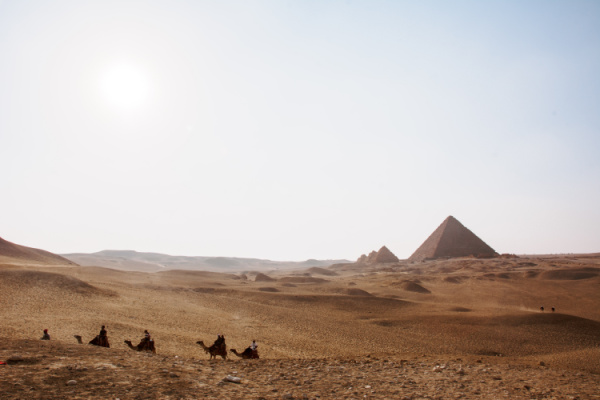
The pyramid standing sentry in the timeless sands
Picture credits: 1) agsaz/Shutterstock; 2) Chipdawes/Wikipedia; 3) ImAAm/Shutterstock; 4) Jon Bodsworth/Wikipedia; 5) Olaf Tausch/Wikipedia; 6) Jon Bodsworth/Wikipedia; 7) Hana El Zohiry /Unsplash.